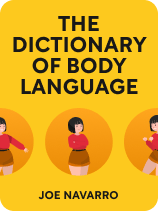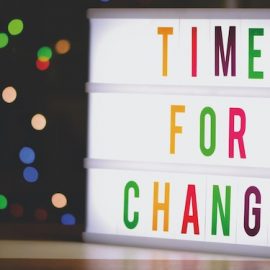

This article is an excerpt from the Shortform book guide to "The Dictionary of Body Language" by Joe Navarro. Shortform has the world's best summaries and analyses of books you should be reading.
Like this article? Sign up for a free trial here.
Can you tell when someone is angry? What angry body language cue can lead to health problems?
Retired FBI Special Agent Joe Navarro covers a variety of emotions that you can detect in other people by reading their subtle behaviors. In The Dictionary of Body Language, he describes two angry body language cues to look for.
Read more to learn how to tell if someone is angry by reading their body language.
Angry Body Language
Signs of anger and irritation in body language often involve muscles tensing and constricting. Navarro’s tips on how to tell if someone is angry include the following two examples of angry body language cues.
Narrowing the Eyes
Some people who are angry will narrow their eyes slightly, so the part of their eyes that you can see becomes smaller. Navarro advises paying attention to the other body language cues that accompany this, as narrowed eyes can have multiple meanings. If someone is truly angry, you’ll likely see tension in other parts of the face and the body, such as the jaw.
(Shortform note: In What Every BODY Is Saying, Navarro states that our eyes have automatic responses that developed through evolution: They instinctively block out things we dislike and widen in response to things we like. So when we’re angry at someone (and therefore dislike them, at least at the moment), we might instinctively narrow our field of vision to block them out. However, our eyes also instinctively block out other things, like too much light and foreign objects, which is why it’s important to look at other cues as Navarro suggests.)
Tightening the Jaw
According to the author, anger also often manifests itself in the jaw. You might see angry people with tight, tense jaw muscles.
(Shortform note: Frequently tensing your jaw can lead to health problems down the line. These may include damage to teeth, inflammation, pain when eating and talking, lockjaw, and headaches. If you struggle with jaw tension from anger, one of the best ways to manage it is to manage your stress—try deep breathing techniques or progressive muscle relaxation, for example.)

———End of Preview———
Like what you just read? Read the rest of the world's best book summary and analysis of Joe Navarro's "The Dictionary of Body Language" at Shortform.
Here's what you'll find in our full The Dictionary of Body Language summary:
- A former FBI Special Agent's guide to body language
- Why you should assess body language cues collectively, not individually
- The body language cues that indicate stress, boredom, anger, doubt, and more






